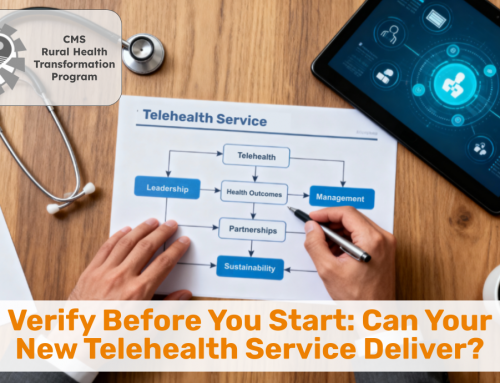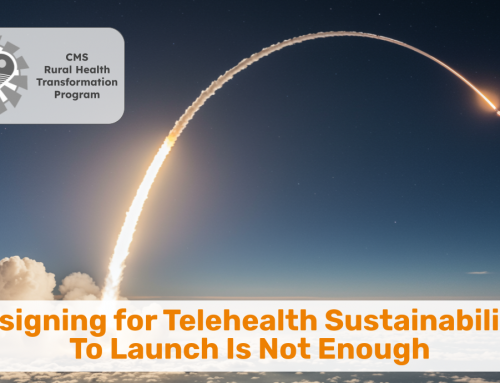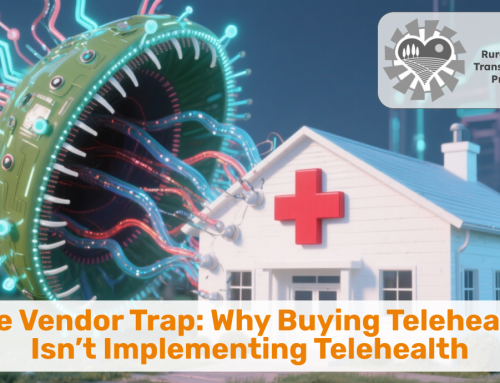Exploring the multiple facets of Telehealth.
This week in September 2021 is “#TelehealthAwareness” week, a promotional campaign by the industry association of telehealth technology and solution vendors.
A diamond is a fascinating terrestrial and human artifact. A simple composition of pure crystallized carbon that formed under high temperature and high pressure is turned into a desirable and valuable object through an artful process, the cut, that brings out the best of this carbon crystal. A popular “cut” for a stereotypical round diamond such as those used for engagement rings is made up of 58 facets.
The same principle applies to raising #TelehealthAwareness: one must come to understand the “58 facets” of telehealth to truly see and appreciate its brilliance; otherwise it is just some technical gimmick to connect patients with physicians.
The 58 Facets of Telehealth
Over the past years I mentioned a few times that telehealth really means different things to different people and to the different subsets of medicine. A few years back I referenced the story of the 6 blind men and the elephant where every man saw a different aspect of telehealth, yet none were able to see the whole picture.
Now, I’m not going to go into a boring list of 58 aspects, but rather will explore a few different themes that describe how telehealth, like a well-cut diamond, is really an exciting, breathtaking solution available to us in healthcare once we can see its brilliance.
But before we take off on our journey, let me start with two definitions: Telehealth is “delivering care at a distance” (i.e., any virtual interactions of patients with the health system) and Telemedicine is practicing medicine at a distance”, i.e., the interactions of patients with clinicians. Thus truly Telehealth becomes Healthcare (#TelehealthIsHealth) transcending the four walls of the clinics and hospitals.
Telehealth is so Much More Than Video Visits
In the wake of the Covid-19 health crisis some audio/video telemedicine and mostly telephonic telemedicine was quickly established to stay in touch with patients during the height of the crisis and to protect the safety of the staff and other patients who could only be seen in person.
Thus Telehealth in the minds of many was introduced as being about video visits that were oftentimes marred by technical or connectivity difficulties on the patient side, thus resulting in a switch to “audio-only telemedicine” a.k.a. phone calls.
In recent months, attention has shifted toward expanding the collection of vital signs to the home as well – RPM or Remote Patient/Physiological monitoring. But there are so many other facets to telehealth than just “video visits” and “RPM”.
The Many Facets of Telehealth
The first set of different facets of telehealth pertain to the modality by which care is delivered. The most common modalities include: video, audio, text, images and data.
In addition to the modalities, two key facets of telehealth are whether the interactions with clinicians or with the health system as a whole are synchronous (i.e., live) or asynchronous.
The multiplication of those modalities with the synchronicity in turn creates a multitude of “at a distance” clinical services such as live televisits, virtual exams and remote surgery as well as secure messaging, faxing EKGs, or sending photos of skin conditions.
Telehealth as a Specialty Tool
The largest set of different telehealth facets pertains to the vast array of different telehealth solutions for the broad variety of clinical specialties. There are specialty applications for almost any field of medicine: from cardiac exam tools to dermatological cameras; from otoscopes to laryngoscopes; from solutions to support remote stroke assessment to solutions that can measure microexpressions and moods to support behavioral health.
Literally dozens of specialty-optimized telehealth solutions — from pediatric care to palliative care, from maternal health to mental health, from urgent care to surgery — support the clinical specialists in their craft to diagnose and treat patients in their area of expertise without the barrier or necessity of physical proximity.
The primary facet of telehealth (the table as it is called in a traditional diamond cut) is the realization that telehealth is a clinical tool. It is not a technical tool. It is not merely a care delivery mechanism. Telehealth is a clinical tool that clinicians must learn to yield consciously and judiciously, similarly to the large set of diagnostic imaging tools such as X-Rays, MRIs, or CT Scans.
Telehealth is so Much More Than Meets the Eye



While most use cases during the Covid-19 health crisis focused on patients at home, dozens of different uses for telehealth expand access to care to the workplace, schools, nursing homes, hospice, the ambulance, mobile clinics and self-service kiosks.
Some innovative programs for remote physiological monitoring focus on comprehensive chronic care management providing multi-specialty aspects to endocrinologists, cardiologists, dentists, nutritionist, primary care, and behavioral health. Other programs are realizing the “hospital at home” concept which can accelerate recovery, reduce the risk of hospital-acquired infections, lower the cost of care, and increase revenue for the hospital.
The most valuable facets of telehealth — those that once recognized will set an average use of telehealth apart from a brilliant telehealth program — pertain to the understanding that “care at a distance” can be leveraged to achieve a healthcare organization’s most ambitious goals.
In the right setting, telehealth can be leveraged to achieve the quadruple aim of improved health outcomes, improved patient satisfaction, lower cost of care and improved clinician and staff satisfaction.
When leveraged in the right way, telehealth can also, for example, improve recruitment and retention, improve quality of care and outcomes, increase geographic and service growth, ensure financial sustainability, and contribute to improving the health of the community.
Telehealth is Healthcare’s Diamond in the Rough
When a healthcare organization truly understands, appreciates, and uses all the facets of Telehealth, then telehealth will turn into a diamond that enables the delivery of extraordinary care.
In industrial applications diamonds, because of their toughness, are used to cut other materials. In healthcare telehealth can provide a solid, tough tool to deliver care to patients when they need it where they want it: “Diamond-grade Care”. Wouldn’t that be brilliant?








To receive articles like these in your Inbox every week, you can subscribe to Christian’s Telehealth Tuesday Newsletter.
Christian Milaster and his team optimize Telehealth Services for health systems and physician practices. Christian is the Founder and President of Ingenium Digital Health Advisors where he and his expert consortium partner with healthcare leaders to enable the delivery of extraordinary care.
Contact Christian by phone or text at 657-464-3648, via email, or video chat.







Leave A Comment